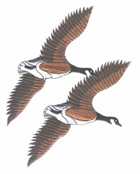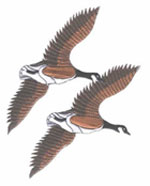1500s Ottomans absorb part of Yemen into their Empire but are expelled in the 1600s.
1600 the Ottermans expelled Yemen from its Empire
1839 Aden came under British rule.
1849 Ottomans return to the north of the country, but later faced a revolt.
1869 The Suez Canal opened and served as a major refuelling port.
1918 The Ottoman empire was dissolved, with North Yemen gaining its independence and was ruled by Imam Yahya.
1948 iman Yahya was assassinated, however, his son Ahmad beat off opponents of feudal rule and succeeded his father.
1962 Imam Ahmad died and was succeeded by his son. However, army officers seize power, and set up the Yemen Arab Republic (YAR), sparking civil war between royalists supported by Saudi Arabia and republicans backed by Egypt.
1967 The formation of southern Yemen, comprising Aden and the former Protectorate of South Arabia. The country was later officially known as the People's Democratic Republic of Yemen (PDRY), and a program of nationalisation begins.
1971 Thousands fled to the north following a crackdown on dissidents, and armed groups formed in a bid to overthrow the government.
1972 There were border clashes between the YAR and PDRY, while a ceasefire was later brokered by the Arab League.
1978 Ali Abdallah Saleh was named as the president of YAR.
1979 Fresh fighting between YAR and PDRY took place, after renewed efforts to unite the two states.
1982 An Earth quake killed 3,000.
1986 Thousands died in the south during political rivalry. President Ali Nasser Muhammad fled the country and was later sentenced to death for treason and a new government was formed.
1990 A Unified Republic of Yemen was proclaimed, with Saleh as its president.
1991 Yemen opposed the US-led action against Iraq in the Gulf War.
1992 There were major towns over food price increases.
April 1993 A coalition government was formed, made up of the ruling parties of former north and south Yemen.
August 1993 Vice-President Ali Salim al-Baid withdrew to Aden, alleging that the south was being marginalised and that southerners were being attacked by northerners.
1994 The armies of the former north and south failed to integrate, and gathered on the former frontiers as relations between southern and northern leaders deteriorate.
May 1994 Saleh declared a state of emergency and dismissed al-Baid and other southern government members following a political deadlock and sporadic fighting. Foreigners fled the escalating fighting.
21st May 1994 Al-Baid declared independence of Democratic Republic of Yemen. Saleh rejected the secession as illegal.
July 1994 Northern forces took control of Aden, while secessionist leaders fled abroad and were sentenced to death in their absence.
1995 Yemen and Eritrea clashed over disputed island territory.
October 2000 The U.S. naval vessel USS Cole was badly damaged in a suicide attack in Aden which was blamed on al-Qaeda. Seventeen U.S. personnel were killed.
October 2000 A bomb exploded at the British embassy. Four Yemenis were jailed for the offence after they admitted they had carried out the attack in solidarity with Palestinians.
February 2001 Violence broke out during the run-up to municipal polls and referendum, in which voters show support for constitutional reform extending the presidential term and his powers.
November 2001 President Saleh visited U.S. and told President Bush that the Yemen was a partner in the fight against terrorism.
February 2002 Yemen expelled more than 100 foreign Islamic scholars, including British and French nationals, in a crackdown on terror and suspected al-Qaeda members.
October 2002 The super tanker Limburg was badly damaged in an attack, which was blamed on al-Qaeda, off the Yemeni coast.
April 2003 The 10 chief suspects in the bombing of the USS Cole escaped from custody while in Aden.
March 2004 Two militants, suspected of masterminding the bombing of USS Cole, were re-arrested.
June-August 2004 Government troops battled supporters of the dissident cleric Hussein al-Houthi in the north. Estimates of the people killed range from 80 to more than 600.
August 2004 A court sentences 15 men on terror charges, including the bombing of Limburg tanker back in 2002.
September 2004 The government reported its forces had killed dissident cleric Hussein al-Houthi, the leader of a revolt in the north.
March-April 2005 More than 200 people were killed in a resurgence of fighting between government forces and supporters of the slain rebel cleric Hussein al-Houthi.
May 2005 President Saleh said the leader of the rebellion in the north had agreed to renounce the campaign in return for a pardon, although minor clashes continue.
July 2005 Police and witnesses reported that at least 36 people were killed across the country during clashes between the police and demonstrators protesting about a cut in fuel subsidies.
December 2005 More than 60 people are killed when a landslide destroyed a mountain village around 20km from Sanaa.
March 2006 More than 600 followers of the slain Shia cleric Hussein al-Houthi who were captured following a rebellion he led back in 2004 were released under an amnesty.
September 2006 President Saleh won another term in elections.
January-March 2007 Many people were killed or wounded in clashes between the security forces and al-Houthi rebels in the north.
June 2007 Rebel leader Abdul-Malik al-Houthi accepts a ceasefire.
July 2007 A suicide bomber attacked a tourist convoy killing eight Spaniards and two Yemenis in the province of Marib.
August 2007 Citizens were banned from carrying firearms in Sanaa, and demonstrations without a permit are outlawed.
October 2007 A Volcano erupted on the Red Sea island of Jabal al-Tair where Yemen has a military base.
November 2007 Clashes between Yemeni tribesmen and army personnel protecting a Ukrainian oil company left 16 people dead in the south-eastern Shabwa province.
January 2008 Renewed clashes were reported between security forces and rebels loyal to Abdul-Malik al-Houthi.
April 2008 Clashes between troops as southern Yemenis protested against alleged northern bias in state job allocation. One man was killed.
March-April 2008 A series of bomb attacks on the police, official, diplomatic, foreign business and tourism as targets. The U.S. embassy evacuated all its non-essential personnel.
September 2008 An attack on the U.S. embassy in the Yemeni capital Sana'a, killed 18 people, including six assailants. Later six suspects were arrested.
October 2008 President Saleh announced the arrest of the suspected Islamist militants allegedly linked to the Israeli intelligence agency.
November 2008 The Police fired warning shots at a Common Forum opposition rally being held in Sanaa. Demonstrators demanded electoral reform and fresh polls. At least five protesters and two police officers were injured.
February 2009 The government announced the release of 176 al-Qaeda suspects on condition of their good behaviour.
June 2009 Nine foreigners were abducted in remote Saada region. The bodies of three were later found. The fate of the remaining six hostages remained unclear, although local rebels denied responsibility.
August 2009 The Yemeni army launched a fresh offensive against Shia rebels in the northern Saada province. Tens of thousands of people were displaced by the fighting.
October 2009 Clashes broke out between the northern rebels and Saudi security forces along the two countries' common border. The rebels accused Saudi Arabia of supporting the Yemeni government in attacks against them. The Saudi government denied this.
November 2009 Saudi Arabia reported it had regained control of territory seized by Yemeni rebels in a cross-border incursion.
December 2009 The Yemen based branch of al-Qaeda claimed it was behind the failed attack on a U.S. airliner. The government called on the West for more support to help it combat the al-Qaeda threat.
January 2010 President Saleh said its government had opened talks with Al-Qaeda militants, provided they renounce violence.
February 2010 The government signed a ceasefire with the northern rebels.
March 2010 The Northern rebels release 178 captives after the government accused the Shia Houthi group of failing to comply with the terms of the truce reached back in February.
September 2010 Thousands fled a government offensive against separatists in the southern Shabwa province.
October 2010 A global terror warning went out after packages containing explosives originating in Yemen were intercepted on cargo planes bound for the U.S.
December 2010 Yemen reports that 3,000 soldiers were killed in a recent outbreak of fighting involving Houthi rebels.
January 2011 The U.S. Secretary of State Hillary Clinton visited Yemen to express her "urgent concern" at al-Qaeda activities in Yemen. Tunisian street protests which unseated President Ben Ali appear to encourage similar demonstrations in other Islamic countries, including Yemen. President Saleh pledged not to extend his presidency in 2013 or to hand over to his son.
March 2011 The pro-reform demonstrations continue throughout the country. Police snipers opened fired on a pro-democracy camp in Sanaa, killing more than 50 people.
Senior military figures including key general, Ali Mohsen al-Ahmar, declared their backing for a protest movement. Several ministers and other senior regime figures also defect to the protesters. President Saleh said that the unrest risked plunging the country into civil war, and a state of emergency is imposed.
April 2011 The unrest and violent government response continued. President Saleh vows to remain in office.
Source
news.bbc.co.uk
Articles of Interest



